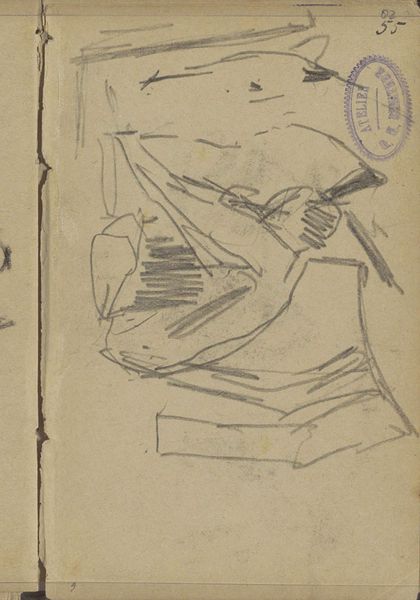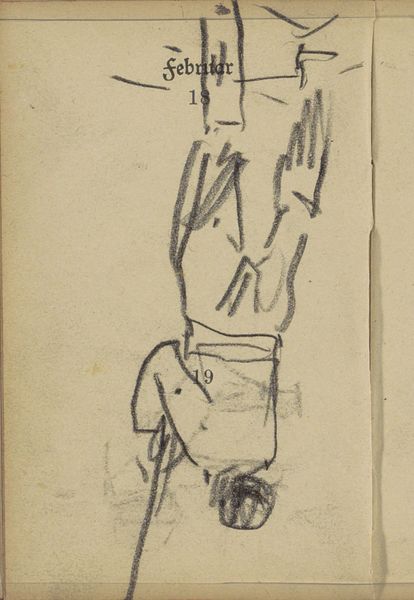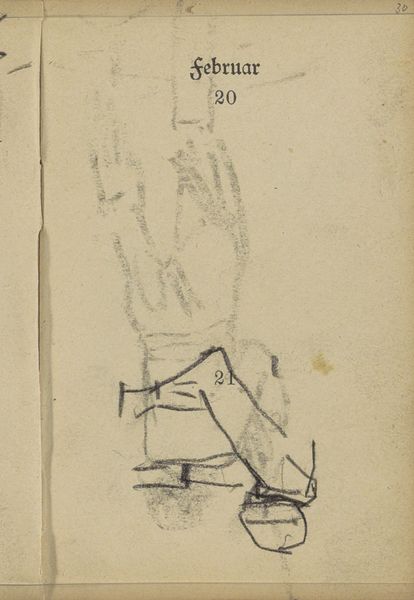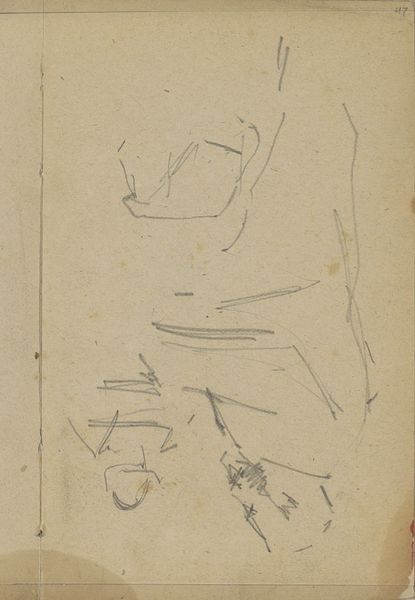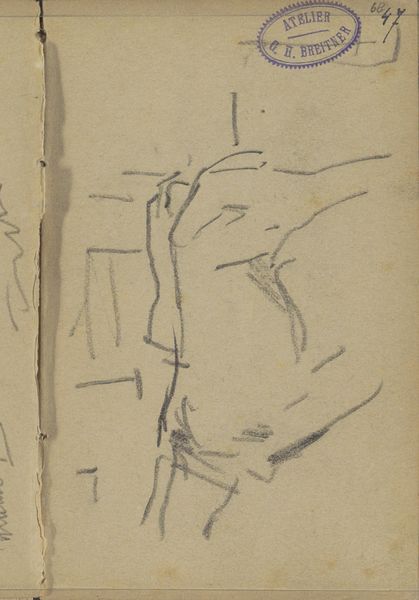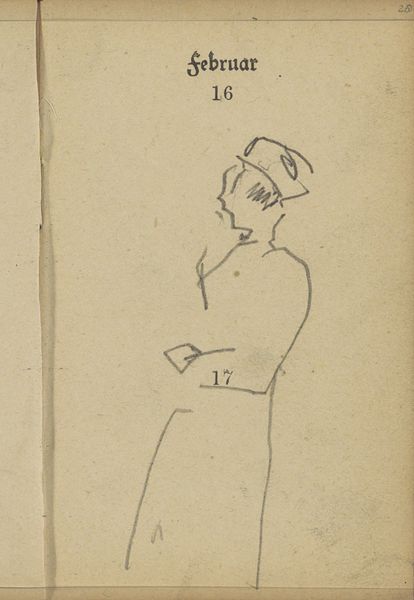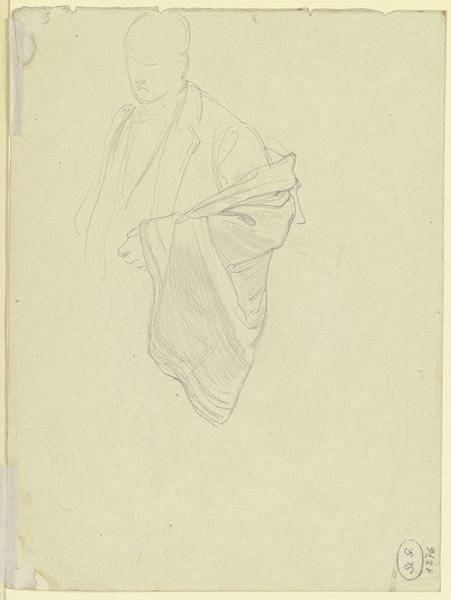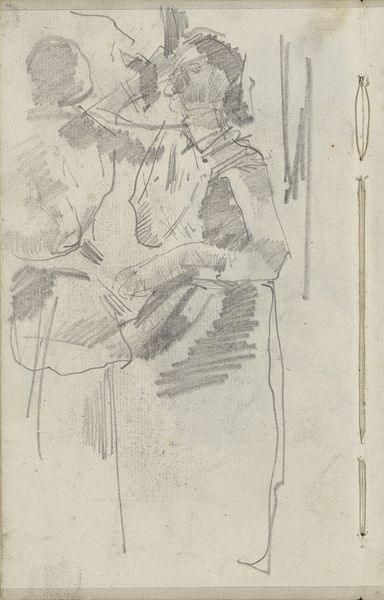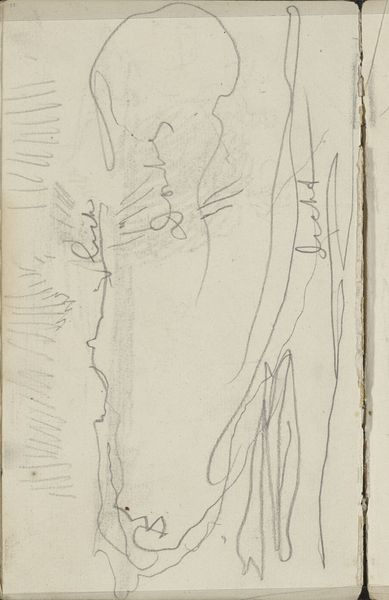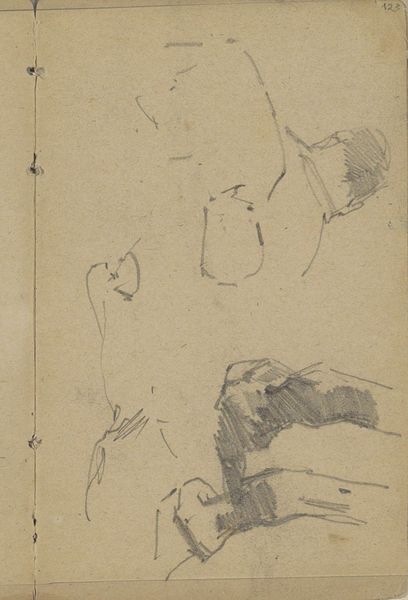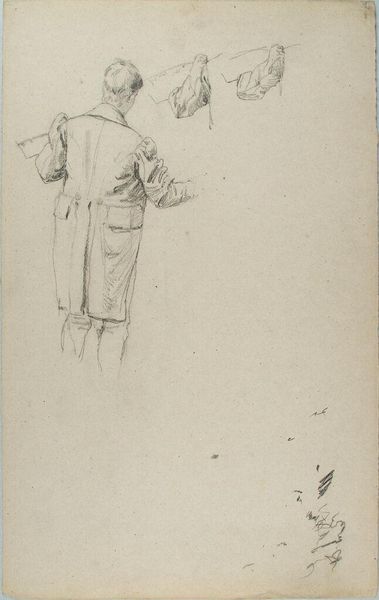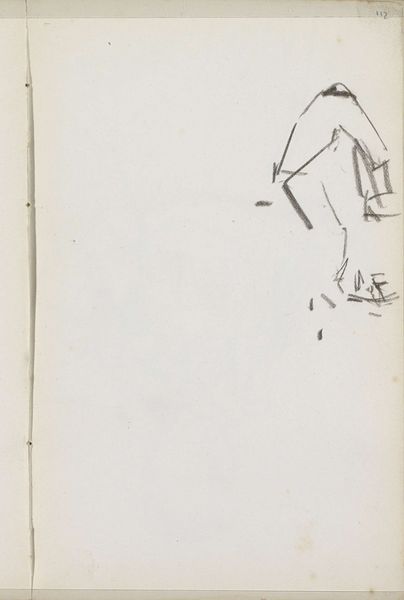
drawing, paper, pencil
#
portrait
#
drawing
#
toned paper
#
light pencil work
#
sketch book
#
hand drawn type
#
figuration
#
paper
#
personal sketchbook
#
idea generation sketch
#
pen-ink sketch
#
pencil
#
sketchbook drawing
#
sketchbook art
#
initial sketch
Copyright: Rijks Museum: Open Domain
Curator: I am immediately struck by its quiet melancholy. It’s so sparse, yet that one figure, turned away, tells such a story. Editor: This is “Soldaat, op de rug gezien,” or “Soldier, Seen From the Back,” a pencil drawing on paper, crafted by George Hendrik Breitner between 1887 and 1891. It's currently held at the Rijksmuseum. The immediacy and rawness suggest that it comes from a sketchbook. Curator: Yes, definitely sketchbook vibes. You can almost feel Breitner just capturing a fleeting moment, a private contemplation. Look at those light pencil strokes; they barely contain the figure, like a memory fading. The sketchiness suggests motion, or perhaps emotional turmoil. Editor: Formally, I note the subject is centrally placed but quite small relative to the full frame of the notebook page, which contributes to the feeling of isolation you identified earlier. The artist does not develop details of the soldier’s face or setting, focusing instead on the posture and the fall of the fabric. Notice the tonal qualities of the paper; its warm hues create depth despite the relative lack of shading and blending techniques. Curator: Exactly! The negative space almost shouts louder than the soldier himself. It’s like the vastness of war, the anonymity, bearing down on him. Breitner’s impressionistic spirit really comes through even in something so simple. Editor: It speaks to a different element of the formalist appreciation; it brings the viewers to a certain existential relationship, one of solitude, and also, absence. We can understand the absence of details and instead, we focus on the shape of the solider. Curator: The drawing’s incompleteness… maybe that mirrors the incomplete lives of soldiers, their stories often left untold, their potential unrealized. It leaves you with so much space to fill, doesn't it? In your heart, and in your mind. Editor: Indeed. Breitner gives us merely the structural components of what could develop into a larger pictorial narrative. I leave feeling the same mixture of intrigue and poignant sentiment that it offers up.
Comments
No comments
Be the first to comment and join the conversation on the ultimate creative platform.
